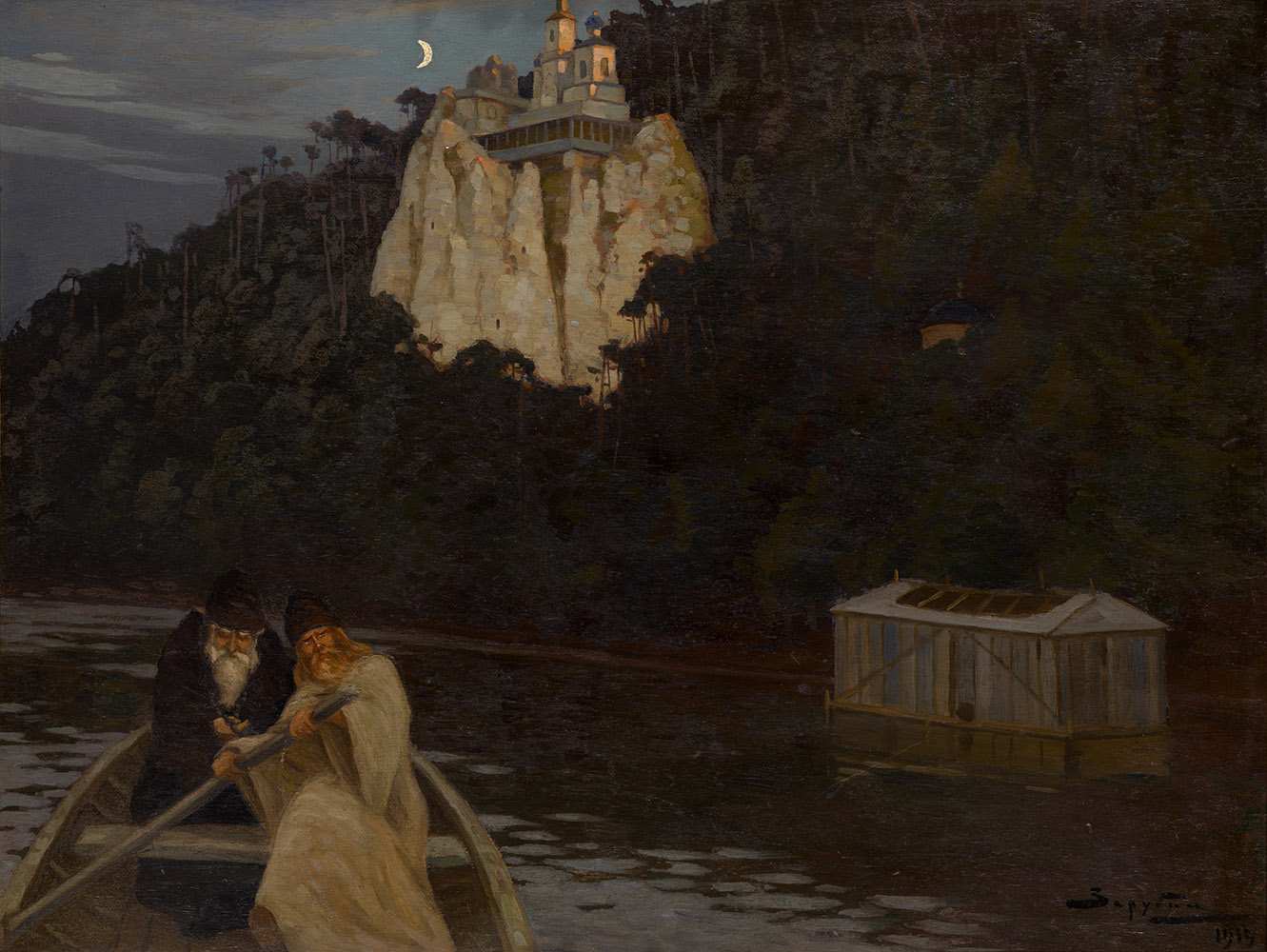MacDougall Auctions 2-3 December 2009
2 December 2009

208. ZARUBIN, VICTOR 1866-1928
By the Svyatogorsky Monastery signed and dated 1919
Oil on board, 68.5 by 90 cm.
50,000-70,000 pounds
Provenance: Private collection, France.
Authenticity has been confirmed by Vladimir Petrov.
Literature: Antikvarnoe Obozrenie, No. 3, 2001, illustrated.
Viktor Ivanovich Zarubin took up painting only after he had graduated from the University of Kharkov, Ukraine, with a degree in physics and maths. Here, in Kharkov, the foundations for the artist’s professional skills were laid in the famous art studio of E. Shreider. However, he very soon understood that the further development of national art could only take place in an international context, and in 1893 went to Paris, then the world capital of art. For three years Zarubin studied at the Academie Julian and even exhibited his paintings at the famous Salon de Paris. Upon his return from France he spent another three years as a student of the Academy of Arts in St Petersburg, studying landscape painting under A. I. Kuindzhi. Finally, in 1898 Zarubin presented for the judgment of the Academy two of his works: Evening Accord and The House of the Lord, which brought him the official title of Artist. For many years Zarubin’s landscapes and everyday scenes regularly featured in the Society for Travelling Art exhibitions, and in 1909 the artist’s skill was recognized when he was awarded the official title of Academician.
The painting By the Svyatogorsky Monastery, offered for the sale is dated precisely to this period of the peak of Zarubin’s artistic career. It was painted in the summer of 1919 when the artist was spending time at his native Kharkov region, the landscapes and other amenities of which feature abundantly in this works. The painting depicts monks crossing the Severnyi Donets river by boat, hastening to attend Matins at one of the most holy places of Ukrainian Orthodoxy, the Svyatogorsky Dormition Monastery. The church of St Nicholas, standing atop a steep chalk cliff, is already visible from afar. Before the Revolution of 1917, this monastery was one of the largest in the eastern part of Ukraine, and thousands of people attended its daily services (up to fifteen to twenty thousand on feast-days and around three thousand on an ordinary day).
Svyatogorsk was initially founded as a fortress in the east of Kievan Russia and acted as a secure defence against the raids of the hostile nomadic tribes. The same purpose was served by the secret tunnels and caves, cut into the chalk mountains. The first mention of the monastery appears in a 1642 royal charter, when it was granted daily sustenance of money and bread. At that time the main church of the monastery was still situated in a cave. After a plague in the early VIII century, the monastery was almost deserted, but several decades later it was again full of monks and endowed with lands necessary for its prosperity. It was then that the church of St Nicholas was erected, becoming the most interesting and ancient building of the monastic ensemble. Its altar is cut from solid bedrock. The characteristic feature of the church is its aesthetic unity with the chalk cliff and the landscape that surrounds it. The history of its building is veiled in mystery: according to legends, the building was erected secretly, hidden behind a chalk wall put up in front of its facade. One morning when the building was finished, the wall was pulled down at the break of dawn, and instead of a bare rock everyone could see a true masterpiece of Ukrainian baroque, immediately receiving the popular name of “the chalk church”.
Such were the memories of the monastery from Zarubin’s childhood. For many years he would return there to make sketches of its inhabitants and, of course, of its panoramas. The Shovkunenko Art Museum of Kherson region takes pride in one such work, The Chapel of the Svyatogorsky Monastery. Another, perhaps even more expressive composition, By the Svyatogorsky Monastery, is presented at the current auction.
Notes on symbols:
* Indicates 5% Import Duty Charge applies.
Ω Indicates 20% Import Duty Charge applies.
§ Indicates Artist's Resale Right applies.
† Indicates Standard VAT scheme applies, and the rate of 20% VAT will be charged on both hammer price and premium.